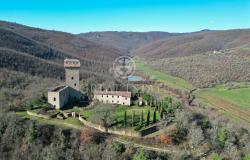 The cold, rainy weather dogging swathes of Europe this summer is of little help to a small colony of frogs in central Italy, struggling to beat the heat.
The cold, rainy weather dogging swathes of Europe this summer is of little help to a small colony of frogs in central Italy, struggling to beat the heat.
The green frog population of Lake Trasimeno in Umbria is suffering from prolonged periods of drought and two killer diseases brought about by climate change resulting in warmer weather, say researchers from Perugia University.
A string of hot summers and mild winters since 2003 have caused the lake waters to fall 181 centimetres, reducing the small amphibians' living space.
But the lack of rain and unrelenting heat is also to blame for the emergence of two diseases that are proving lethal to a section of the green frog populace.
Both diseases strike at the skin, a critical organ for the amphibians' physiological processes, as it helps them absorb water and breathe.
One is caused by a protozoa that is killed off by cold weather, while the other is triggered by a fungus called chytrid, which has been transformed by the heat from its previous quiescent, non-parasitic form.
The fungus, which has killed off entire frog populaces in other parts of the world, attacks parts of the skin making it difficult for the frog to breathe.
The lake is home to two frog groups: the native pool frog (rana lessonae), which is considered at particular risk, and a hybrid species, a mix between the pool frog and the marsh frog (rana ridibunda).
Until the end of the 1990s, the pool frog comprised 70% of the lake's frog-dwellers but this has dropped to just 30% over the last few years.
If the pool frog vanishes, the entire frog population will eventually disappear, as the hybrid is infertile, say researchers.
DWINDLING FROG NUMBERS SIGN OF WIDER ENVIRONMENTAL PROBLEMS.
And this is not just a tragedy for the frogs themselves but will also have a knock-on effect on the entire ecosystem of the lake.
The frogs play a crucial role in helping balance the lake's insect populace, feeding on a large number of midges and mosquitoes.
In addition, the dwindling frog numbers are a sign of wider environmental problems.
"The frogs' vulnerability makes them one of the best natural indicators of the health of the environment around us," explained Rita Pascolini, head of the Perugia researchers.
"They can be affected both by changes both in the water and on land. Pollution and the destruction of their habitat are crucial factors in the decline of amphibians but alone are not sufficient to explain the disappearance of this species".












